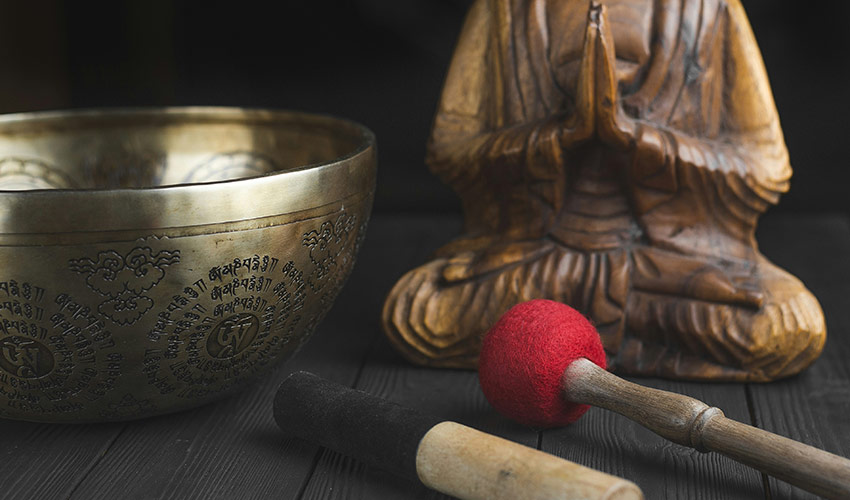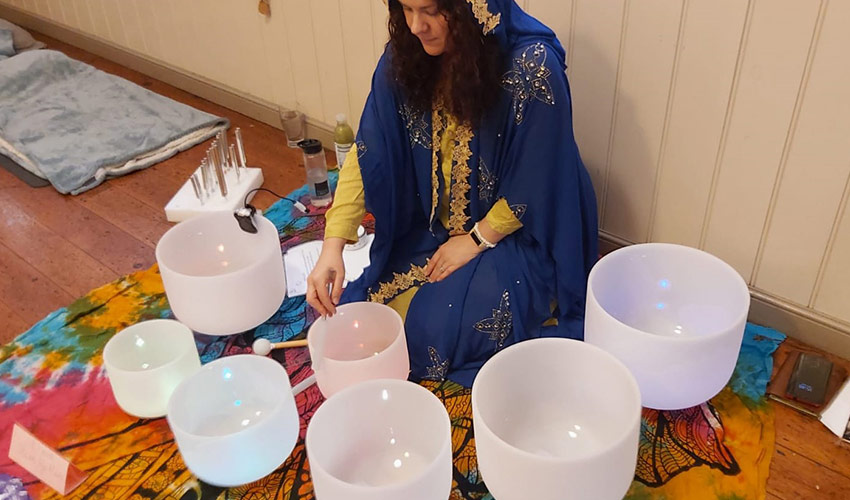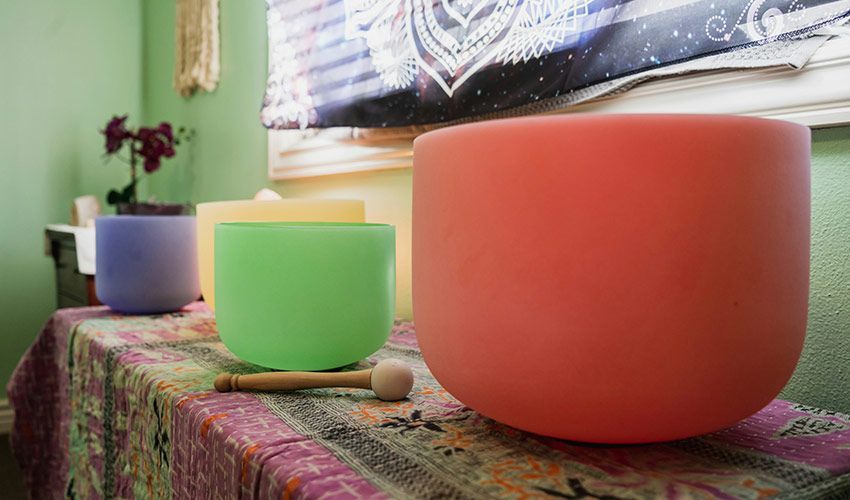The Healing Power of Sound: Exploring the Science Behind Sound Healing
Throughout history, various cultures have recognised the profound impact of sound on the human mind and body. From ancient chanting practices to modern-day sound baths, the therapeutic use of sound has evolved into a field known as sound healing or sonic therapy. This article delves into the scientific underpinnings of the healing power of sound, sound baths as a healing modality and exploring how vibrations and frequencies can positively influence our physical, emotional, and mental well-being.
I will also touch upon the Ancient Egyptian philosophy on Sound healing as I find this a fascinating realm of research to understand now what the ancients knew then. It really is incredible just how long sound has been found to touch the minds, bodies and hearts of resonant individuals. Music has been a very significant part of my journey, and still remains to be. So to research the science behind sound therapy was literally music to my ears because it almost feels validating, and a sense of a collective understanding of the power behind sound/music, how it connects us all and runs through each and every one of us, is a profound and pure notion I’d like to share with you to spread awareness and understanding on why sound can be extremely healing and cathartic. The best part, our experience internally with sound(s) is completely unique based on individual needs. I find this very empowering. So let's take a look firstly at what Sound healing is.

What is Sound Healing?
Sound healing is a therapeutic practice that utilises the vibrational and resonant qualities of sound to promote physical, emotional, and spiritual well-being. Rooted in ancient traditions and present in various cultures worldwide, sound healing encompasses a range of techniques and instruments to create specific auditory experiences with the intention of improving an individual's health and quality of life.
Key Elements of Sound Healing:
Instruments:
- Singing Bowls: Metal or crystal bowls that produce resonant sounds when struck or rubbed.
- Tuning Forks: Metal instruments that produce specific frequencies when struck, used to apply sound vibrations to the body.
- Gongs: Large, flat metal discs that produce rich, deep tones when struck.
- Drums & Percussion: Rhythmic patterns and beats produced by drums and other percussion instruments for grounding and relaxation.
- Flutes & Wind Instruments: Melodic sounds produced by woodwind instruments to evoke specific emotional responses.
Voice:
- Chanting & Mantras: Repeating specific sounds, syllables, or phrases to induce a meditative or altered state of consciousness.
- Toning: Extended vocal sounds that aim to resonate with and balance specific energy centres or chakras in the body.
Environments:
- Nature Sounds: Incorporating sounds from nature, such as flowing water, birdsong, or wind, to enhance relaxation and connection with the environment.
- Electronic Soundscapes: Using synthesised or recorded sounds to create immersive auditory experiences.
Methods:
- Sound Baths: Participants lie down or sit comfortably while a facilitator plays various instruments, creating a therapeutic sound experience.
- Individual Sessions: Tailored sessions where a practitioner applies specific sounds directly to the body or uses instruments to address specific health concerns.
- Group Sessions: Shared experiences where participants come together to immerse themselves in healing sounds.
Theoretical Basis of Sound Healing:
Resonance:
- The fundamental principle of sound healing is resonance—the ability of one vibrating object to affect another. In this context, the vibrations from sound can resonate with different parts of the body, promoting harmony and balance.
Frequency & Brain Waves:
- Different frequencies of sound have been associated with specific states of consciousness. For example, lower frequencies may induce relaxation and meditative states, while higher frequencies may enhance focus and alertness.
Chakras & Energy Centres:
- Sound healing often involves the idea that specific frequencies can influence and balance the body's energy centres, known as chakras in Eastern traditions.
Mind-Body Connection:
- The practice recognises the interconnectedness of the mind and body, suggesting that imbalances or disruptions in one can be addressed through the therapeutic application of sound.
Benefits of Sound Healing:
Stress Reduction:
- Sound healing induces relaxation, helping to alleviate stress and tension.
Emotional Release:
- Vibrations from sound can facilitate the release of stored emotions and promote emotional well-being.
Improved Sleep:
- Sound healing has been associated with better sleep quality and insomnia relief.
Pain Management:
- The practice may contribute to pain relief and the reduction of physical discomfort.
Enhanced Meditation:
- Sound can deepen meditation experiences, aiding in achieving altered states of consciousness.
Mindfulness & Presence:
- Participants often report heightened awareness and a sense of mindfulness during and after sound healing sessions.
Sound healing is a holistic approach that complements conventional medical practices and promotes overall well-being. While it may not be a cure-all, many individuals find it to be a valuable tool for relaxation, self-discovery, and maintaining a healthy balance between mind, body, and spirit.

Some Science Behind the Sound
The Physiology of Sound Perception:
Before delving into the therapeutic aspects, it's essential to understand how the human body perceives sound. Sound is essentially a form of energy that travels through air, water, or solids in the form of vibrations. When sound waves reach the ear, they cause the eardrum to vibrate, triggering a chain reaction that eventually leads to the perception of sound in the brain.
The Impact of Frequencies on Brain Waves:
Research has shown that different frequencies of sound can have distinct effects on brain waves. Brain waves are rhythmic patterns of electrical activity occurring in the brain, associated with different states of consciousness. For instance, low-frequency sounds, like those found in deep drumming or certain chants, have been linked to inducing states of relaxation and meditation by promoting the production of delta and theta brain waves.
On the other hand, higher-frequency sounds, such as those produced by flutes or singing bowls, may stimulate the production of alpha and beta brain waves, associated with alertness, focus, and stress reduction. By strategically using various frequencies, sound therapy practitioners aim to influence the listener's mental state, promoting relaxation or heightened awareness as needed.
The Role of Resonance in Healing:
One of the key principles of sound healing is resonance – the natural tendency of an object to vibrate at a specific frequency. Every part of the body, from organs to cells, has its resonant frequency. When exposed to certain sound frequencies, these parts can be stimulated, promoting balance and harmony within the body. For example, Tibetan singing bowls emit a rich spectrum of harmonics and overtones. When played, the vibrations from the bowl are not only heard but also felt throughout the body. This tactile element enhances the therapeutic effect, promoting a sense of grounding and well-being
The Connection between Sound & the Autonomic Nervous System:
The autonomic nervous system (ANS) plays a crucial role in regulating involuntary bodily functions, such as heart rate, digestion, and respiratory rate. Sound has been shown to influence the ANS, with certain frequencies activating the parasympathetic nervous system, responsible for the "rest and digest" response. This activation can lead to a reduction in stress hormones, lower blood pressure, and an overall sense of calmness.
Clinical Applications of Sound Therapy:
The therapeutic applications of sound extend beyond relaxation and stress reduction. Clinical studies have explored the use of sound therapy in various medical settings. For example, music therapy has been incorporated into cancer care to alleviate pain and anxiety. Additionally, rhythmic auditory stimulation has shown promise in motor rehabilitation for stroke survivors, leveraging the brain's ability to synchronise with external rhythms.

Sound Baths as a Healing Modality
A sound bath is a therapeutic experience that involves immersing oneself in soothing sounds and vibrations produced by various instruments, such as singing bowls, gongs, chimes and other percussion instruments. I am tapping into Sound Baths specifically because they are, and continue to be an extremely valuable tool for healing for me personally, and others that share this space with me. While the effects can vary from person to person, a sound bath is generally believed to provide several benefits (some of which I have already mentioned at the beginning):
Stress Reduction & Relaxation:
The calming and harmonious sounds during a sound bath can help induce a deep state of relaxation. The vibrations resonate with the body, promoting a sense of calmness and reducing stress levels.
Balancing Energy Centres:
Sound baths are thought to help balance the energy centres, or chakras, within the body. Each chakra is associated with specific frequencies, and the vibrational energy from the instruments is believed to align and harmonise these energy centres.
Mental Clarity & Focus:
The meditative quality of a sound bath can lead to enhanced mental clarity and improved focus. As the mind becomes more relaxed, it may be easier to let go of distracting thoughts and achieve a state of mental stillness.
Emotional Release & Healing:
Sound baths may facilitate emotional release by helping individuals release tension and stored emotions. The vibrations are believed to penetrate deeply, promoting a sense of emotional well-being and providing an opportunity for healing.
Improved Sleep:
Regular exposure to sound baths has been associated with better sleep quality. The relaxation induced by the sounds and vibrations can help alleviate insomnia and promote a more restful night's sleep.
Pain Relief:
Some individuals report a reduction in physical pain and discomfort after a sound bath. The vibrations may stimulate the release of endorphins, the body's natural painkillers, contributing to an overall sense of well-being.
Enhanced Meditation Practices:
Sound baths are often used as a complement to meditation practices. The calming sounds can deepen the meditative experience, making it easier for individuals to enter a state of mindfulness or transcendental awareness.
Stimulation of Creativity & Inspiration:
The immersive nature of a sound bath can stimulate creativity and inspiration. Many people find that after a sound bath, they experience a heightened sense of imagination and a greater ability to access their creative potential.
Promotion of Mind-Body Connection:
Sound baths provide an opportunity for individuals to connect with their bodies on a deeper level. The vibrations can create a profound sense of unity between the mind and body, promoting a holistic sense of well-being.
It's important to note that the benefits of a sound bath are subjective, and individuals may have unique responses to the experience. Some people may find profound relaxation and healing, while others may simply enjoy the meditative and soothing qualities of the sounds. As with any wellness practice, individual preferences and experiences can vary, and it's essential to approach sound baths with an open mind and a willingness to explore their potential benefits.

A Sound Facilitators Perspective
Recently I have had the honour to attend Sound Baths hosted by my beautiful friend and talented Sound Facilitator, Rose, who has been using her Sound Bowls and various instruments to transform the energy of individuals on such a profound and personal level. It’s a very personal experience when immersing yourself in a Sound Bath; everyone in attendance has got exactly what THEY needed in that time and space. Whether it be simply relaxation, or indeed a clearing of certain energies, it has never failed to reach whatever spaces in the body that it needs to reach. I thought it was important to include in this article the perspective of my Sound facilitator to add depth and insight into these powerful practices.
Here’s what Rose has to say about her practices:
“Sound to me is multi-dimensional; it's physical, spiritual and so much more. It holds power. To move people emotionally and physically, to hurt, and most importantly to heal. It allows people to transcend, to worship, to connect, to embrace life and can change lives so dramatically.
Personally I grew up playing the piano and singing. I started songwriting at an early age and it allowed me to express and transcend from a horrible situation, it gave me wings.
I carried on singing and playing for many years then stopped when I felt I had no call to write about my life because I was too busy living it as a Mum.
I was a health care worker for many years but had never made the connection between music and healing. After going on my own self-healing journey, attending gong baths and crystal bowl sound baths, I went to one with my husband and something just clicked, I knew I wanted to be a sound healer.....so here we are.
It's beautifully enthralling to see what sound can do for other people, after having experienced the healing frequencies for myself, to be able to gift that to others is quite an honour.
It's so varied for each person and holds an individual and personal resonance, which I find fascinating to hear from clients.
The healing frequencies continue to work even after the sound bath for a few days, how powerful is that? Tapping into that energetic field for myself and clients truly feels euphoric and I'm so grateful to the frequencies and sound to grace us humans this healing energy and space to grow from.”

Ancient Egyptian Philosophy on Sound Healing
Ancient Egyptian civilization, with its rich cultural and spiritual traditions, held profound beliefs about the power of sound and its therapeutic effects on the human body and soul. While there is no direct evidence of an ancient Egyptian "sound healing" practice per se, various aspects of their philosophy and rituals suggest a deep understanding of the influence of sound on well-being and spiritual development.
Sacred Sounds & Chants:
The ancient Egyptians believed in the potency of sacred sounds and chants. Vocalisations, hymns, and ritualistic chants were an integral part of religious ceremonies. The repetition of specific sounds and words was thought to invoke divine forces, purify the spirit, and establish a connection with the divine.
Musical Instruments in Rituals:
Musical instruments played a crucial role in ancient Egyptian rituals. Harps, lyres, flutes, and percussion instruments were used in religious ceremonies, processions, and festivals. The harmonious sounds produced by these instruments were believed to create a sacred atmosphere, facilitating communication with the divine and promoting a sense of spiritual balance.
Tuning to Cosmic Frequencies:
The ancient Egyptians had a keen interest in astronomy and the cosmos. It is suggested by some researchers that they might have been aware of cosmic frequencies and their potential impact on human consciousness. The alignment of architectural structures, such as temples and pyramids, with celestial bodies, may have been intended to harness specific cosmic energies, including those related to sound.
The Power of Mantras:
Similar to other ancient cultures, the Egyptians understood the significance of repetitive vocalisations or mantras. Uttering specific words or phrases repetitively during rituals or meditative practices was believed to have transformative effects on the individual. These practices aimed to purify the mind, invoke divine blessings, and harmonise the soul.
Healing Temples:
Temples in ancient Egypt were not only places of worship but also centres for healing. Temples dedicated to the god Imhotep, known as the god of medicine, included spaces for rituals, herbs, and likely therapeutic practices. It is conceivable that sound, through chanting or musical instruments, played a role in the healing rituals conducted within these sacred spaces.
Symbolism of Sound in Mythology:
Ancient Egyptian mythology often featured symbolic stories that incorporated the power of sound. The creative force of the universe, often represented by the god Atum or Ra, was sometimes described as uttering words to bring forth creation. This emphasis on the divine word highlighted the transformative and generative power attributed to sound.
While there is limited direct evidence specifically addressing sound healing practices in ancient Egypt, the holistic approach to spirituality and the interconnectedness of various elements in their worldview suggest a profound recognition of the potential healing effects of sound. The use of sound in religious ceremonies, combined with their understanding of cosmic energies and symbolic representations of sound in mythology, underscores the significance of sonic elements in the ancient Egyptian philosophy of well-being and spiritual growth.

The science of sound as a healing modality is an exciting and evolving field, offering new insights into the ways in which vibrations and frequencies can positively impact our well-being. As research continues to explore the intricate connections between sound and the human body, sound therapy may find broader applications in mainstream healthcare, complementing traditional approaches and contributing to holistic approaches to health and wellness. Whether through the ancient practice of chanting, the resonance of singing bowls, or the therapeutic use of music, the healing power of sound provides a unique avenue for enhancing both physical and mental health.
“The body is held together by sound: The presence of disease indicates that some sounds have gone out of tune”
Deepak Chopra
“Rhythm is sound in motion. It is related to the pulse, the heartbeat, the way we breathe. It rises and falls. It takes us into ourselves; it takes us out of ourselves.”
Edward Hirsch






















